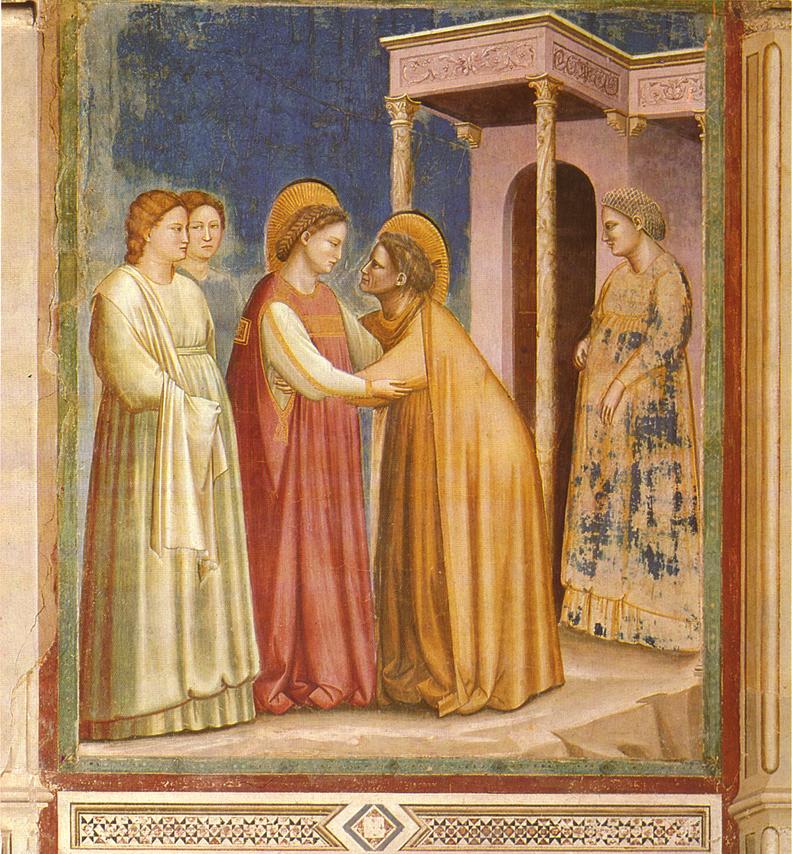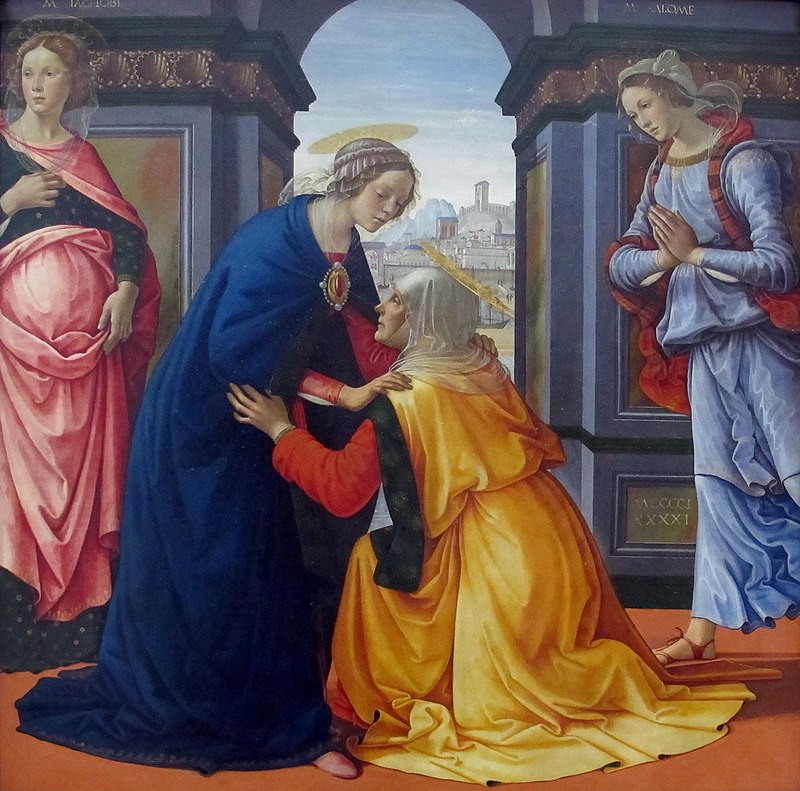Back to: Renaissance Art and the Christmas Story
Giotto – The Visitation (1306)
The painting represents the intense moment of encounter between the Virgin Mary and her cousin Elizabeth, who reveal to each other that both are pregnant (Elizabeth is the mother of Saint John the Baptist. Elizabeth had a trek of 100 miles. Luke said she went with “haste.”

What a shot in the arm this first meeting with Elizabeth must have been to Mary’s faith! Not only is Elizabeth, this barren woman ‘advanced in years’ standing there heavily pregnant, just as the angel said, but she knows all about Mary’s secret—not only that Mary is going to have a baby too, but that her baby will be the Lord! How could Elizabeth have known all this unless God had revealed it to her?! Mary must have been incredibly lonely – who could she talk to? Joseph made plans to divorce her when he found out—he didn’t believe the story (Matthew 1.19). How could she process it all and begin to come to terms with the enormity of it all?
This painting greatly resembles the commonly accepted works of art during the Italian Renaissance. First, Giotto’s scene clearly shows religious bias by depicting an image from the bible and the Virgin Madonna. “The Visitation” also resembles Renaissance art with impressively detailed people with perfect anatomical proportions. The different facial expressions of each character also prove that Giotto was creating a Renaissance-era masterpiece. Renaissance art dealt with detail but also with copying the earlier Greek and Roman styles, which can be seen through the clothing on the characters in “The Visitation”. Lastly, Giotto’s “The Visitation” can be seen as a classic Renaissance work because the lines and borders of images on the canvas all converge to one point. This use of perspective was a new and rising technique that would be the norm for all paintings during the Italian Renaissance era.
Domenico Ghirlandaio -The Visitation (1491)
The subject was set by Ghirlandaio with a large classical arch in the background featuring a landscape in the center. Elizabeth, wearing a wide yellow vest, is paying homage to Mary and kneeling.

The painting features numerous details, including the refraction effects of the light, which Ghirlandaio studied from Flemish paintings at Florence. Others include the frieze decorated with pearls and shells (allusions to Mary’s purity), the light veil of the Madonna, and the gilt brooch decorated with pearls and a ruby in the center (this a hint to Jesus’ future Passion) which holds her cloak.
The two women at the sides are, as described by the inscriptions on the arch, Mary, mother of James, and Mary Salome. In the Medieval context, the two were thought to be daughters of St. Anne and thus the sisters or half-sisters of Mary. In the Gospel narrative, they are not present at the Visitation; but in some interpretations of the crucifixion narrative, they are said to have been present at the foot of the cross, and their inclusion in the painting may be intended as a reference to the crucifixion
